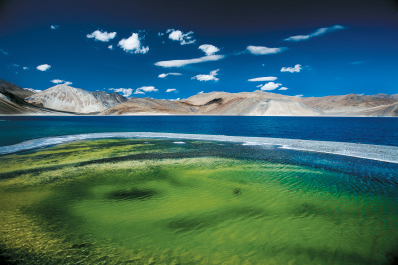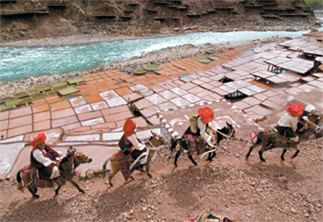Traditional Himalayan life disappearing into thin air

The pictures of the deep blue sky, water streams flowing high on the mountains and a woman wearing an ethnic costume and accessories suggest an unpolluted nature and a civilization that has not yet undergone modernization. The photographer has tried to record the scenery before it vanishes in the course of development and the pictures are now in an exhibition titled “Himalaya
Monograph” starting today at GoEun Museum of Photography in Busan.


Park took pictures of worshipers in Tibet, a clear blue sky reflected on a jade green lake, tribes wearing colorful costumes and caravans traveling on the mountains.
“Mountain tribes who have preserved their lifestyle for thousands of years slowly adopted a more convenient way of life,” Park wrote in his note. “The faster the loss of tradition and culture, the more apprehensive I felt. I fear that their traditions are going to disappear quickly.
Increasingly, I came to focus on Himalayans, who try to preserve their last remaining traditions.”

Provided by GoEun Museum of Photography
Born in 1958, Park worked as photographer for the Hankook Ilbo daily newspaper for 11 years. He also worked on an assignment basis for the Los Angeles Times and The New York
Times. Including the 20-year project in the Himalayas, he took photographs of various cultures and traditions in many parts of the world. He still spends half the year traveling and taking pictures of disappearing tribal cultures. Park has received awards from the Korea Press Photographers Association and Geo Olympus Photography. Park held private exhibitions at Fuji

“Himalaya Monograph” continues till May 31. The gallery is open from 10 a.m. to 7 p.m., but closed Mondays. Guided tours start at 2 and 4 p.m. To reach the museum in Busan, get off at Haeundae subway station and exit at No. 3. Admission is free. For more information, call (051) 746-0055 or visit www.goeunmuseum.org.
By Limb Jae-un Staff Reporter[jbiz91@joongang.co.kr ]










with the Korea JoongAng Daily
To write comments, please log in to one of the accounts.
Standards Board Policy (0/250자)